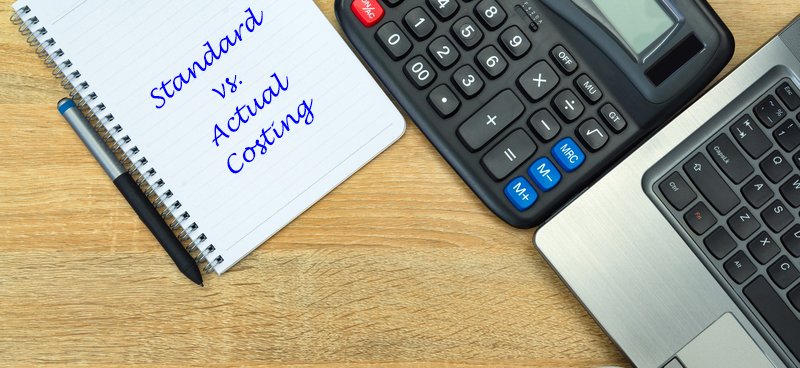Standard Costing’s Legacy and Why Actual Costing Has Become Important for Manufacturers

Part 1 of a 5-Part Series. Read Part 2, Part 3, Part 4, Part 5.
Standard versus actual costing is an important decision point for manufacturers. Synergy Resources’ Patricia ‘Pat’ Bumbaca, Katie Farrand and Jack Hughes share their insights on the issue to help manufacturers choose what may be best for their individual businesses.
Q: What is the genesis of standard costing?
Pat: When repetitive manufacturing emerged back in the day, standard cost was, for all practical purposes, all that was known. In that era, manufacturers could plan production, which gave manufacturers greater bargaining power and control over inputs such as labor and materials.
The manufacturer could confidently say to its vendors, ‘We’re going to build 10,000 of these. This is the price we’ll pay’. The repetitive nature of manufacturing meant that virtually all of the costs of production were known and fixed for a year.
Henry Ford famously said, ‘You can have any color as long as it’s black.’ Standard cost emerged to support this repetitive marketplace.
Q: What is actual costing and why has it become important?
Pat: Actual costing has become important because the economy has progressed. Today, we have an open, dynamic marketplace where that level of Big Brother control over suppliers no longer exists. Most manufacturers don’t have the ability to squeeze their suppliers: ‘You will sell to me at this price’. It’s no longer possible. Of course, a few very large corporations still have this kind of pricing power, but they are the exception. And certainly, most small to medium-sized manufacturers do not.
In a fluctuating, global marketplace, manufacturers need the ability to say, ‘Our prices and costs are changing’. That’s why actual costs are a better fit for most manufacturers today. The exception would be the relatively few repetitive manufacturers who still have huge production runs of the same product.
Q: What does Synergy Resources recommend to its customers?
Pat: When customers talk to us about standard versus actual costing, we go through all of the pros and cons. We don’t say to our customers, ‘You must be standard’ or ‘You must be actual’. We frequently recommend actual costing because it offers a better set of analytical tools for making comparisons. However, we fully understand why some customers might choose standard costing.
Q: Is it possible to use both standard and actual costing at the same time?
Katie: Yes. A manufacturer can set up an actual cost environment and maintain standard cost, too. A benefit is that you’re going to see how much money you expect to make on the job if there’s a competitive situation during the quoting process. If you actively maintain them, you’ll have a lot of trust in your standard, even though you don’t actually know what’s going to happen when you run the job. So you can make a more informed decision based on the evidence. That’s one way to think about it.
If you’re looking at the actual cost, you can see how much money you actually did make on a work order. You can use that information to drive improvement projects. If your high-volume runner is not making as much money as you’d like to, then that might be an input into a Kaizen event to improve your labor processes or to work on how you limit the variation on the cost of the materials you’re buying.
Q: How does the manufacturer decide between standard versus actual cost?
Pat: It’s a personalized choice for the manufacturer to make. We work with a lot of customers whose legacy databases and software applications could only support standard costs. It’s all they’ve known. The customer might say, ‘Standard cost is what we know, so that’s what we want to use going forward.’ In those cases, standard cost is a comfortable choice.
We believe it’s important for the customer to make an informed business decision. If we think the customer could benefit from using actual costing, we’ll encourage them to consider it. The customer might find that making a few small changes could net them a big reward.
About the Experts
- Patricia ‘Pat’ Bumbaca has worked for Synergy Resources since 1999. Pat specializes in financials and accounting process improvements.
- Katie Farrand has worked in the Continuous Improvement group at Synergy Resources for the past six years. Katie specializes in helping customers improve business performance through the implementation of process improvement strategies.
- Jack Hughes is a CPA who joined Synergy Resources in 1998. Jack specializes in financial software applications and business process consulting.


